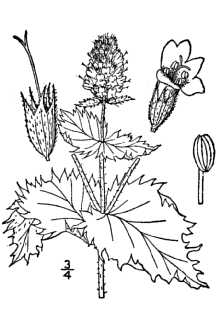History of Peppermint – Earliest Recorded Uses
(Mentha piperita, Linn.)
Pliny (23-79 AD), Roman scientist and historian, in his own peppermint history, recorded that the Greeks and Romans used peppermint to flavor sauces and their wines. Sprays of peppermint also adorned their tables.

History of Peppermint in England.
Peppermint is thought to be a native English plant and possibly a hybrid between M. spicata and M. aquatica.
Early English peppermint history has the herb being included in the work or Ray (1627 – 1705) in 1696. John Ray is most well-known for his work Methodus Plantarum Nova in 1682 which was influential in the world of botany. In 1721, it was included in the London Pharmacopceia under a listing for M. piperitis sapore.
Commercial peppermint history in England began around 1750. Growing peppermint commercially was primarily at Mitcham in Surrey at that time. Similar statements to what we found when researching the history of lavender, extoll essential peppermint oil produced from plants grown in this area as far superior to that from peppermint grown elsewhere. That said, peppermint can easily be grown in just about every climate and geographical location.
History of Peppermint in the United States
Commercial peppermint history in the United States is believed to have begun in Wayne County, New York in the early part of the 1800s. It’s thought that for as long as 40 years, this region was the only area producing distilled mint. A.M. Todd believed the black muck soils of Michigan would produce a quality product. Around 1870, he began cultivating peppermint in the Kalamazoo area. By 1920, 90 percent of the true peppermint and spearmint oils of the world were being produced in southwestern Michigan (per a 1920 presentation by E.H. Woohams, superintendent of the A.M. Todd Company Mint Farms).
Woohams did defer that peppermint oil from Mitcham England was superior in flavor and bouquet. He also said that Japanese oil was had less flavor probably due to their plants containing less menthol.
Peppermint History – Medicinal Uses of Peppermint Oil.
Oil of peppermint contains menthol which is an antiseptic and anesthetic. Chewing a few peppermint leaves is thought to relieve a toothache. Indigestion, cold and flu sufferers can find some relief by drinking peppermint tea. However, peppermint tea can cause insomnia and it is therefore best avoided at night.
Peppermint oil is useful in combating flatulence and mild indigestion. Many over-the-counter stomach aids contain peppermint to both enhance the taste as well as the effectiveness of the medicine. However, in a strange bit of irony, peppermint is something of a trigger food for many suffering from acid reflux and may cause their symptoms to worsen.
Additional Peppermint Information.
With its strong, yet pleasant flavor, it’s no wonder that peppermint has been grown and cultivated for centuries. Along with this historical look at the origins and early uses of peppermint, Our Herb Garden has guides on Growing Peppermint and Peppermint Companion Planting.